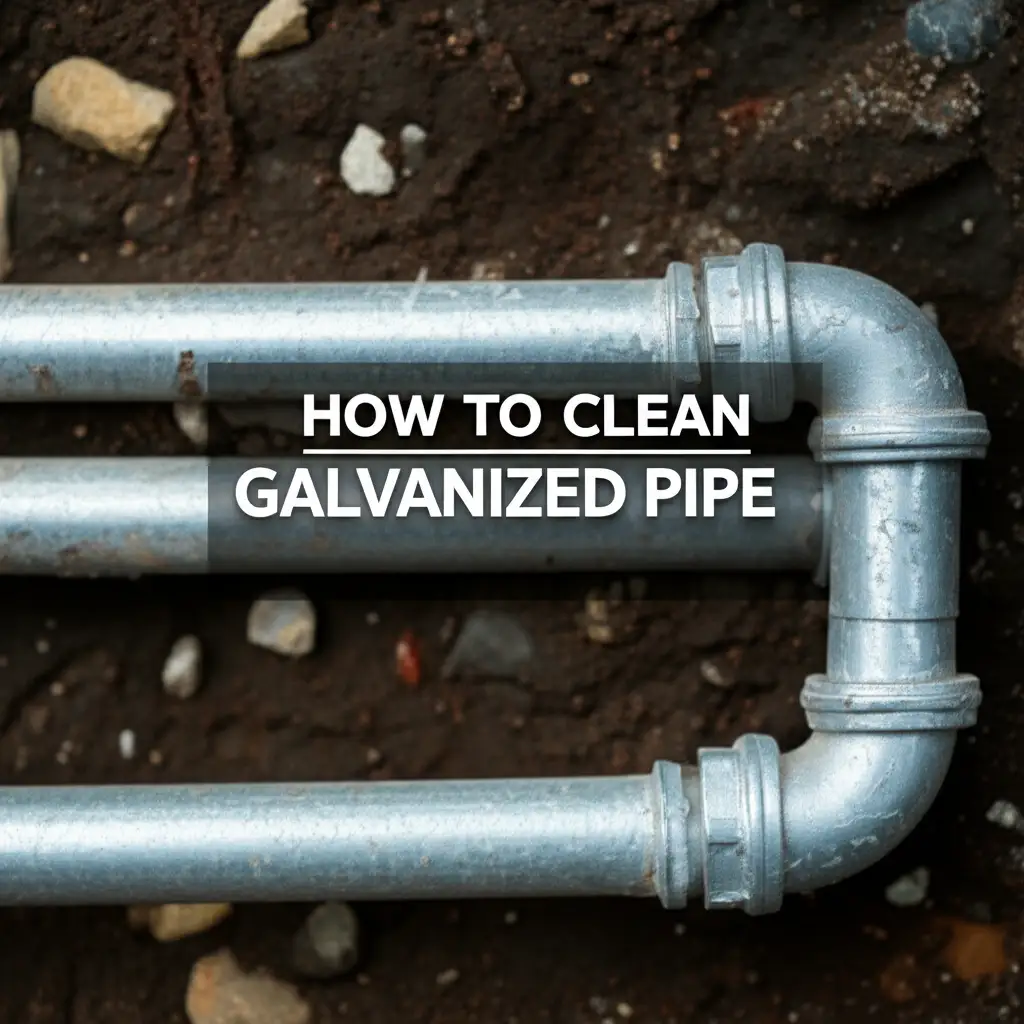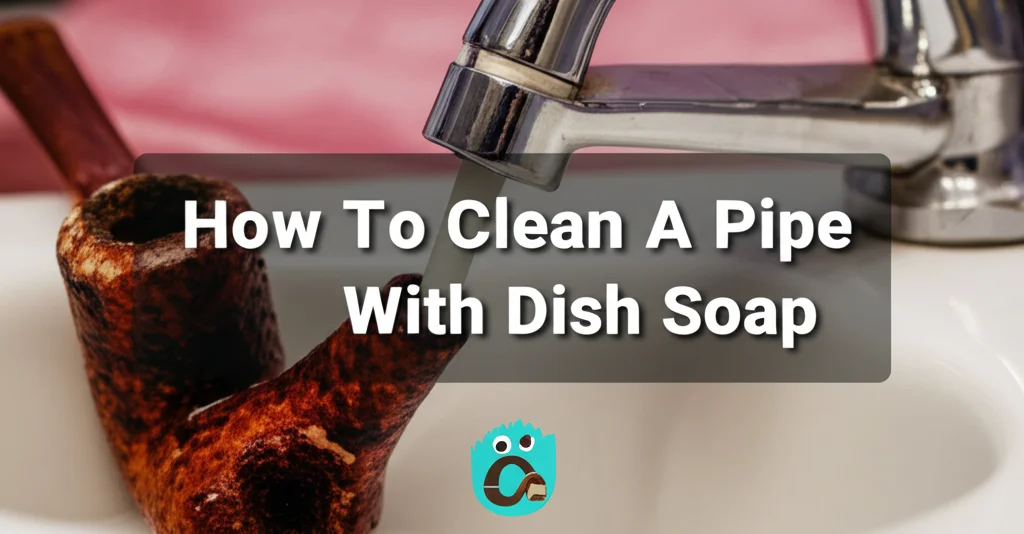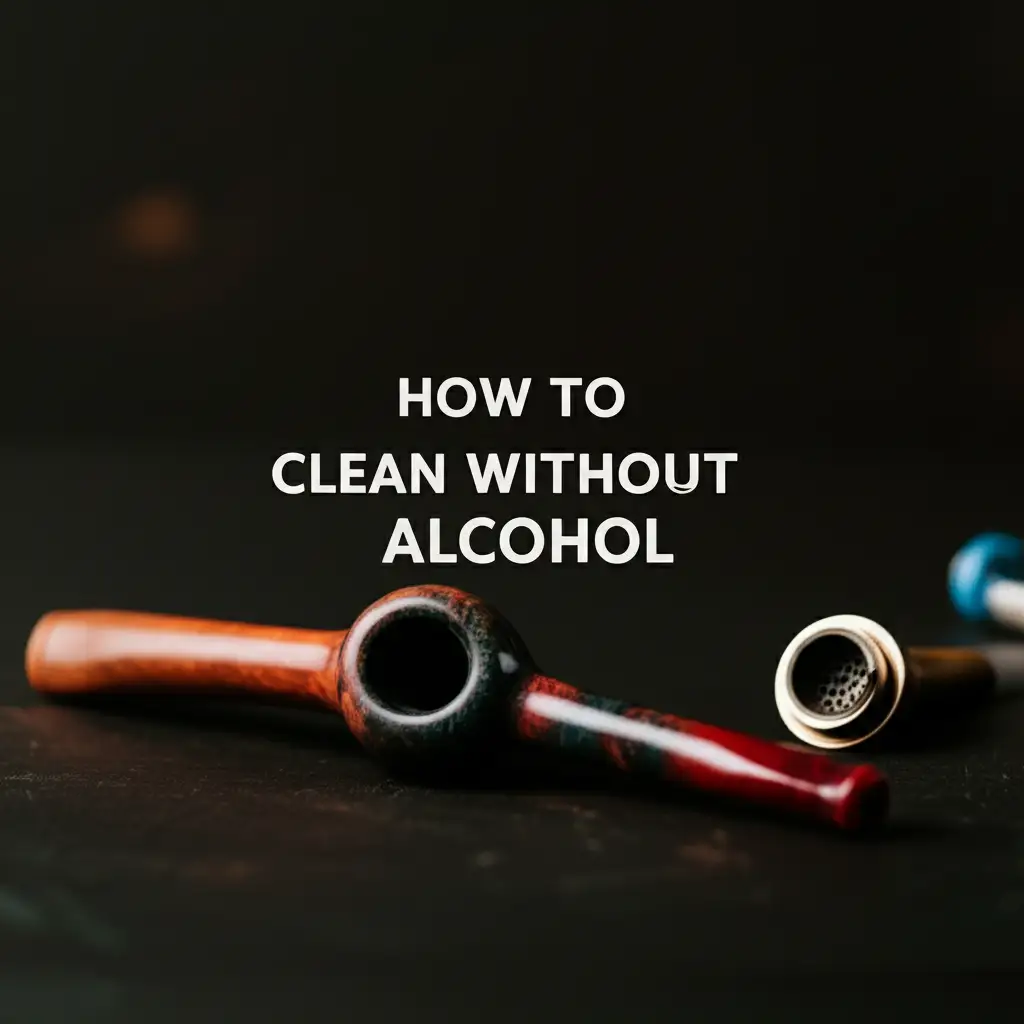· Home Cleaning · 11 min read
How To Clean Galvanized Pipe

How to Clean Galvanized Pipe: Restore and Protect
Have you noticed discolored water coming from your faucets? Perhaps your water pressure seems lower than usual. These are common signs of buildup in galvanized pipes. Many homes built before the 1960s still have these pipes. They often accumulate rust and mineral deposits over time. Cleaning these pipes can extend their life and improve your home’s water quality. I understand the frustration of dealing with old plumbing. This article will show you how to clean galvanized pipe effectively. We will cover safe methods for both internal and external cleaning. You will learn about the tools needed and preventative maintenance. Let’s get your pipes running smoothly again.
Takeaway
- Identify rust and blockages in galvanized pipes.
- Gather necessary safety gear and cleaning tools.
- Clean external rust using simple abrasive methods and rust converters.
- Address internal clogs with natural solutions or professional help.
- Implement regular maintenance to prevent future buildup.
To clean galvanized pipe, you must first identify the type of buildup. For external rust, use wire brushes and rust converters. For internal blockages, try natural methods like baking soda and vinegar. Professional intervention may be necessary for severe clogs or corrosion.
Understanding Galvanized Pipes and Their Cleaning Needs
Galvanized pipes have a zinc coating over steel. This coating protects the steel from rust and corrosion. Over many years, this zinc layer can degrade. Water flows through these pipes daily. This constant contact causes the zinc to wear away. Once the zinc is gone, the steel begins to rust.
Rust and mineral deposits build up inside the pipes. This buildup reduces the pipe’s internal diameter. Water flow decreases, and water pressure drops. The water might also appear rusty or discolored. External rust can also form, especially in damp areas. Cleaning these pipes helps restore proper function. It also extends their overall lifespan. Ignoring these issues can lead to severe blockages or burst pipes.
Safety First: Essential Precautions for Pipe Cleaning
Working with old pipes demands careful safety measures. Galvanized pipes, especially older ones, can be fragile. Rust often makes them brittle. Always wear appropriate personal protective equipment (PPE). This protects you from chemicals, rust particles, and potential splashes.
Your safety gear should include heavy-duty gloves to protect your hands. Safety glasses or goggles are crucial for eye protection. A dust mask or respirator prevents you from inhaling rust particles or fumes. Ensure good ventilation in your work area. Open windows and doors if you are working indoors. This helps disperse any fumes from cleaning agents. Turn off the water supply to the pipe section you are working on. This prevents leaks or floods. Having a bucket ready for drips is also a good idea. Always prioritize your safety before starting any cleaning task.
Tools and Materials for Cleaning Galvanized Pipes
Having the right tools makes cleaning much easier. You will need different items for external and internal pipe cleaning. For external rust, gather a wire brush or steel wool. Sandpaper, especially medium-grit, is also helpful. A rust converter or primer will treat stubborn rust spots. You might also use a stiff-bristled brush.
For internal blockages, you can start with household items. Baking soda and white vinegar are effective natural cleaners. A drain snake or auger can break up more solid clogs. Sometimes a wet/dry vacuum is useful for suctioning out debris. Have a bucket or towels ready to catch any spills. A flashlight helps you see inside pipes if possible. Remember, each tool serves a specific purpose in the cleaning process. Choose your tools based on the type and severity of the blockage.
External Cleaning Tools:
- Wire brush or steel wool
- Medium-grit sandpaper
- Rust converter or primer
- Stiff-bristled brush
- Clean cloths or rags
Internal Cleaning Tools & Materials:
- Baking soda
- White vinegar
- Boiling water (for some methods)
- Drain snake or auger
- Wet/dry vacuum (optional for severe clogs)
- Buckets and towels
Step-by-Step Guide: Cleaning Surface Rust and Corrosion
Cleaning external rust on galvanized pipes is a straightforward process. You can often see this rust, making it easier to address. First, locate the rusted areas on the pipe’s surface. Ensure the area is dry before you begin.
- Prepare the Area: Lay down tarps or old newspapers. This protects the surrounding surfaces from rust debris.
- Remove Loose Rust: Use a wire brush or steel wool to scrub the rusted spots. Apply firm pressure. This action removes loose, flaky rust. Continue until you expose a more solid surface. For particularly stubborn patches, you can use medium-grit sandpaper. Cleaning pipe without alcohol often involves mechanical scrubbing like this.
- Clean the Surface: Wipe the area clean with a damp cloth. Remove all rust particles and dust. Let the pipe dry completely.
- Apply Rust Converter (Optional): If significant rust remains, apply a rust converter. This product chemically changes rust into a stable, paintable surface. Follow the product’s specific instructions. Apply it evenly. Allow it to cure fully.
- Paint or Seal (Optional): Once the rust converter is dry, you can paint the pipe. Use a metal-friendly primer and paint. This adds an extra layer of protection. It also improves the pipe’s appearance. Regular maintenance of the external surface helps prevent future rust.
Addressing Internal Blockages and Buildup in Galvanized Pipes
Internal buildup in galvanized pipes can cause serious plumbing problems. Low water pressure and discolored water are clear indicators. Cleaning these internal issues requires a different approach than surface rust. I recommend starting with less invasive methods first.
Natural Cleaning Methods
For minor clogs or routine maintenance, natural solutions work well. These are safer for your pipes and the environment.
- Baking Soda and Vinegar Flush:
- Pour one cup of baking soda down the drain or pipe opening.
- Follow with one cup of white vinegar.
- You will see fizzing. This chemical reaction helps break down grime.
- Let it sit for at least 30 minutes, or even overnight for tough clogs.
- Flush with hot water. This method is often effective for grease and soap scum. Vinegar is a powerful cleaner for many surfaces. You can learn more about its uses, like how to clean mold with vinegar.
- Boiling Water Flush: For simple grease clogs, pouring boiling water can sometimes clear the path. Use caution. Do not pour boiling water if you suspect PVC components. Boiling water can damage some plastic pipes. It is generally safe for metal pipes.
Mechanical Cleaning for Stubborn Clogs
When natural methods fail, mechanical tools can help. These tools physically break up or pull out blockages.
- Drain Snake or Auger:
- Insert the drain snake into the pipe opening.
- Push it slowly until you meet resistance.
- Rotate the snake handle. This action breaks up the clog. It also grabs onto debris.
- Pull the snake out slowly, retrieving the clog material.
- Repeat until the water flows freely. Drain snakes are very effective for toilet pipe blockages.
- Wet/Dry Vacuum (for specific drains): For a sink or tub drain, a wet/dry vacuum can sometimes suction out clogs. Create a tight seal around the drain opening. Turn on the vacuum. The strong suction can dislodge lighter clogs.
- Hydro Jetting (Professional Method): For severe internal buildup, hydro jetting is highly effective. This method uses high-pressure water streams. It blasts away years of rust and mineral deposits. This is a job for professionals only. It requires specialized equipment. It is similar in principle to clearing sediment out of a well using powerful water flow.
Always flush the pipes with water after cleaning. This washes away any loosened debris.
Preventative Maintenance for Galvanized Pipes
Prevention is key to keeping galvanized pipes clean and functional. Regular maintenance helps avoid future problems. It extends the life of your plumbing system. Taking small steps now can save you major headaches later.
- Regular Flushing: Periodically flush your pipes with hot water. This helps prevent minor buildup. Do this especially for drains that see heavy use. Running hot water through the system can dissolve grease and soap scum before they harden.
- Use Drain Screens: Install drain screens in sinks and tubs. These catch hair, food particles, and other debris. This prevents them from entering your pipes. Less debris means fewer clogs.
- Avoid Pouring Grease Down Drains: Grease solidifies in pipes. It creates stubborn blockages. Dispose of cooking grease in the trash. Scrape food scraps into the garbage. Even small amounts of grease add up over time.
- Consider a Water Softener: Hard water contains minerals like calcium and magnesium. These minerals contribute significantly to internal pipe buildup. A water softener removes these minerals. This reduces the scale formation inside your pipes. It is a long-term solution for homes with hard water.
- Annual Professional Inspection: Have a plumber inspect your galvanized pipes annually. They can identify early signs of corrosion or significant buildup. Professionals can also recommend specific treatments or replacement plans. Early detection of problems often leads to simpler, less costly solutions. Proactive care ensures your pipes remain efficient.
When to Call a Professional
Knowing when to call a professional plumber is crucial. Some pipe issues are beyond DIY capabilities. Attempting to fix severe problems yourself can cause more damage. This might lead to costly repairs.
Signs You Need Professional Help:
- Persistent Clogs: You have tried various cleaning methods, but the pipe remains blocked. This suggests a deep or extensive clog. It might be due to severe rust buildup or a foreign object.
- Widespread Low Water Pressure: If low water pressure affects multiple faucets, it indicates a systemic issue. This often points to widespread internal corrosion in your main water lines. A professional can diagnose the exact cause.
- Rusty or Discolored Water Continues: Even after flushing, your water looks rusty. This means significant internal corrosion is present. The zinc coating may be completely gone. The steel pipe itself is extensively rusting.
- Visible Pipe Damage: You see severe external rust, cracks, or leaks on the pipes. These are signs of structural compromise. The pipe might be close to bursting. Do not try to patch these yourself.
- Old Plumbing System: If your home has very old galvanized pipes, they may be at the end of their lifespan. Cleaning might only provide temporary relief. A plumber can assess if replacement is the better option. They can also advise on replacing galvanized pipes with more modern materials like PEX or copper. This decision requires professional expertise. Replacing pipes is a significant home improvement project.
Plumbers have specialized tools and expertise. They can perform inspections using cameras. This allows them to see the exact condition inside your pipes. They can also conduct hydro-jetting. This method powerfully clears severe internal buildup. Do not hesitate to call a professional for complex or persistent plumbing problems. They ensure your home’s water system remains safe and functional.
Frequently Asked Questions
What causes rust on galvanized pipes?
Rust on galvanized pipes occurs when the protective zinc coating wears away. This typically happens over many years of water exposure. Once the zinc is gone, the underlying steel is exposed to water and oxygen. This leads to oxidation, which we see as rust. Hard water can also accelerate this process.
Can I use harsh chemicals to clean galvanized pipes?
I do not recommend using harsh chemical drain cleaners. These chemicals can be very corrosive. They can further damage older, already weakened galvanized pipes. They might also react with rust, creating dangerous fumes. Stick to natural solutions or mechanical methods for safer cleaning.
How often should galvanized pipes be cleaned?
External galvanized pipes generally do not need routine cleaning. Clean them when you see visible rust. For internal pipes, preventative measures are best. Regular flushing and using drain screens help. If you notice signs of buildup, address them promptly. A professional inspection every few years is wise.
What are signs of internal buildup in galvanized pipes?
Common signs of internal buildup include reduced water pressure at faucets. You might also see discolored water, often rusty or brown. Slow drains or frequent clogs are also indicators. If these issues occur, your pipes likely have accumulated mineral deposits or rust.
Is it better to clean or replace old galvanized pipes?
The decision to clean or replace depends on the pipe’s condition. For minor rust or blockages, cleaning can be effective. If pipes are very old, severely corroded, or frequently leaking, replacement is often the better long-term solution. A professional plumber can assess the damage and recommend the best course of action.
Can vinegar damage galvanized pipes?
White vinegar is generally safe for galvanized pipes. It is a mild acid. It helps dissolve mineral deposits and light rust. However, prolonged exposure to concentrated vinegar is not recommended. Always dilute it or flush it thoroughly after using it. For example, cleaning a shower with vinegar uses similar principles of mild acid cleaning.
Conclusion
Cleaning galvanized pipes is an important task for any homeowner. It directly impacts your water quality and pressure. We covered how to clean galvanized pipe effectively, addressing both external rust and internal blockages. Remember to always prioritize safety by wearing appropriate PPE. Start with gentle methods like natural solutions, then move to mechanical tools if needed. Regular preventative maintenance, like avoiding grease down drains, helps keep your pipes clear. However, recognize when a problem is too big for a DIY fix. Severe corrosion, persistent clogs, or widespread low pressure mean it is time to call a professional plumber. Taking good care of your galvanized pipes will ensure a reliable water supply for years to come. Act now to maintain your home’s plumbing health.
- galvanized pipe
- pipe cleaning
- rust removal
- pipe maintenance
- drain cleaning
- metal cleaning




